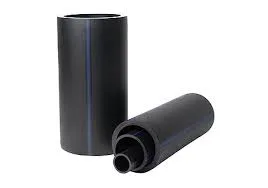តុលា . 22, 2024 05:46 Back to list
Efficient Drip Irrigation Techniques Utilizing PVC Pipes for Sustainable Gardening
Drip Irrigation Using PVC Pipe An Efficient Way to Conserve Water
In today’s world, where water scarcity is becoming a serious issue, efficient water management practices have become more crucial than ever. One effective way to enhance water conservation in agriculture is through drip irrigation. This technique not only minimizes water usage but also maximizes crop yield. A widely discussed method of drip irrigation is the use of PVC (Polyvinyl Chloride) pipes, which offers durability and simplicity. In this article, we will explore the benefits of using PVC pipes for drip irrigation, the setup process, and some useful tips for implementation.
Benefits of Drip Irrigation with PVC Pipes
1. Water Efficiency Drip irrigation systems are designed to deliver water directly to the plant roots, reducing evaporation and runoff. This method can save up to 50% more water compared to traditional irrigation techniques.
2. Cost-Effectiveness PVC pipes are relatively inexpensive and readily available. The initial cost of setting up a drip irrigation system using PVC is lower than many other materials like polyethylene or metal, making it an attractive option for farmers and gardeners.
3. Longevity PVC pipes are resistant to corrosion and can withstand weather elements, providing a long-lasting solution for irrigation systems. When installed properly, they can last for decades, offering consistent performance without the need for frequent replacements.
4. Easy Installation and Maintenance Unlike complex irrigation systems, drip irrigation using PVC pipes can be set up with basic tools and minimal technical skills. Regular maintenance, such as clearing any clogged emitters, is simple and can be performed by users without the need for professional assistance.
5. Improved Crop Yield By delivering water directly to the roots, drip irrigation promotes healthier plant growth. Reduced water stress leads to higher quality produce and increased yields, benefitting both farmers and consumers.
Setting Up a Drip Irrigation System with PVC Pipes
1. Planning and Design Begin by mapping out your garden or field. Identify where the plants are located and how much water each plant will require. Planning should also include determining the water source and the necessary flow rate.
2. Gathering Materials Acquire PVC pipes of various diameters for main and lateral lines, connectors, emitters, valves, and stakes. Also, ensure that you have a cutting tool, measuring tape, and a wrench for tightening fittings.
drip irrigation using pvc pipe

3. Installing the Mainline Lay out your mainline PVC pipes along the rows of your plants. Use a trenching tool to dig shallow trenches if necessary. Ensure that the mainline is leveled and secured.
4. Adding Emitters Determine the spacing for emitters based on the water needs of your plants. Use a punch tool to create holes in the lateral polyethylene tubing for the emitters, which allow water to flow directly to the roots.
5. Testing the System Before finalizing the installation, conduct a test run to check for leaks and ensure that all emitters are delivering water efficiently. Adjust the flow rate as needed.
6. Monitoring and Maintenance After installation, regularly check the system for any blockages or leaks. Monitor plant health and soil moisture levels to make sure that your irrigation system is functioning optimally.
Tips for Successful Implementation
- Soil Testing Before setting up your irrigation system, testing your soil for water retention capabilities can help you determine the best watering schedule.
- Rainwater Harvesting Consider integrating a rainwater harvesting system with your drip irrigation setup to further conserve water resources and reduce reliance on municipal supplies.
- Seasonal Adjustments Modify your irrigation schedule based on seasonal changes. During wet seasons, you may need to reduce the frequency of watering.
- Using Mulch Apply mulch around your plants to retain moisture, suppress weeds, and create a healthier growing environment.
In conclusion, drip irrigation using PVC pipes is a practical and effective solution for water conservation in agriculture. Its cost-effectiveness, ease of installation, long durability, and ability to improve crop yield make it an attractive option for farmers and home gardeners alike. By implementing this efficient irrigation method, we can contribute to a sustainable future where water resources are managed wisely.
-
PVC Transparent Sheet Roll - Durable & Flexible PVC Plastic Sheet Roll for Industrial & Home Use
NewsJun.24,2025
-
High-Quality PVC PPR Pipes and Fittings Durable ERA PPR Solutions
NewsJun.10,2025
-
High-Quality Large HDPE Sheets & Large Diameter PVC Pipe Durable Large PVC Pipe Supplier
NewsJun.10,2025
-
High Density Polyethylene Cutting Board - Durable & Food Safe
NewsJun.09,2025
-
3 Inch PVC Pipe for Durable Irrigation Affordable & Reliable
NewsJun.09,2025
-
Premium PPR Plastic Water Pipe Fittings - Durable & Leak-Free
NewsJun.09,2025

